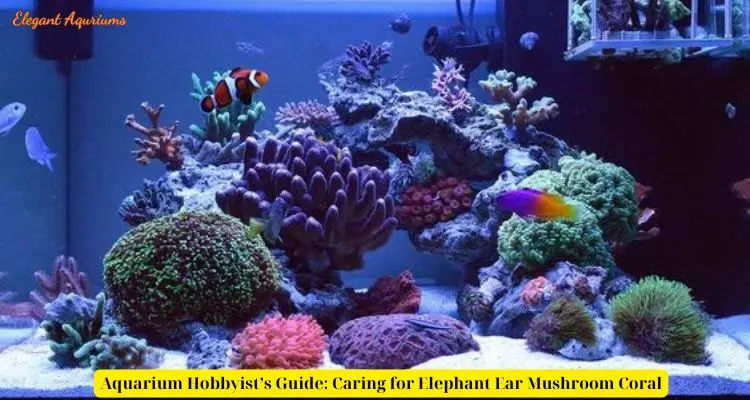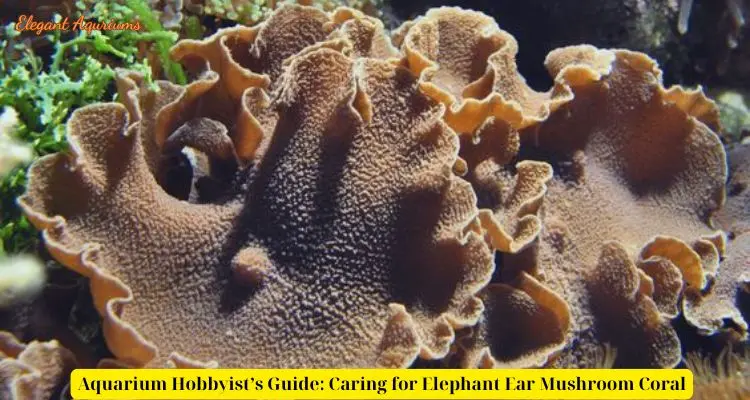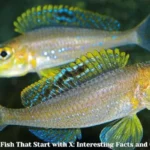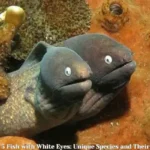Aquarium accessories and decorations
Aquarium Hobbyist’s Guide: Caring for Elephant Ear Mushroom Coral
Elephant Ear Mushroom Coral, known for its stunning appearance and unique shape, is a captivating choice for reef enthusiasts. With its broad, flat, and often undulating surface, it resembles the ear of an elephant, making it a striking addition to any marine aquarium. However, caring for Elephant Ear Mushroom Coral requires understanding its needs and maintaining optimal conditions to ensure it thrives. Elegant Aquriums will revealed everything you need to know about caring for Elephant Ear Mushroom Coral, including its characteristics, habitat requirements, feeding, and maintenance.
Understanding Elephant Ear Mushroom Coral
Overview and Characteristics
Elephant Ear Mushroom Coral (Rhodactis spp.) belongs to the family Ricordea, which includes various mushroom corals. These corals are named for their distinctive, broad, and rounded appearance, which can resemble an elephant’s ear. They come in various colors, including greens, blues, and purples, adding vibrant hues to your reef tank.
- Appearance: Elephant Ear Mushroom Coral typically has a large, flat, and somewhat floppy structure. Its surface may be smooth or slightly textured, often with a translucent appearance that reveals its internal structures.
- Behavior: These corals are relatively peaceful and do not have stinging tentacles like many other corals. Instead, they rely on their mucus to catch small food particles and plankton.
Natural Habitat
In the wild, Elephant Ear Mushroom Corals are found in the shallow waters of the Indo-Pacific region. They inhabit coral reefs and rocky substrates, where they benefit from the nutrient-rich water and moderate water flow. Understanding their natural habitat helps replicate the conditions they need to thrive in captivity.
Setting Up the Ideal Environment
Tank Requirements
Creating the right environment is crucial for the health of Elephant Ear Mushroom Coral. Here’s what you need to consider:
- Tank Size: While Elephant Ear Mushroom Corals can adapt to various tank sizes, a larger tank (at least 30 gallons) is preferable. Larger tanks provide more stable water conditions and space for the coral to grow.
- Water Quality: Maintaining excellent water quality is essential. Ensure the tank water is clean and well-filtered. Regular water changes (10-15% per week) help maintain stable water conditions and prevent the buildup of harmful substances.
Lighting
Elephant Ear Mushroom Corals are adaptable to various lighting conditions but prefer moderate to low light. Excessive lighting can cause stress and damage to the coral.
- Lighting Type: LED lights or fluorescent lights with a moderate intensity are suitable. Avoid placing the coral in direct, intense light, as this can cause bleaching.
- Lighting Duration: Aim for a lighting cycle of 8-12 hours a day. A consistent light schedule helps mimic natural conditions and supports the coral’s health.
Water Flow
Moderate water flow is ideal for Elephant Ear Mushroom Coral. Too much flow can cause the coral to retract or become stressed, while too little flow can lead to the accumulation of detritus and poor nutrient exchange.
- Flow Type: Gentle to moderate water movement is best. Use a water pump or powerhead to create a gentle current that helps with nutrient distribution and waste removal.
- Placement: Position the coral in an area of the tank where it receives gentle flow. Avoid placing it directly in the path of strong currents.
Feeding Elephant Ear Mushroom Coral

Dietary Needs
Elephant Ear Mushroom Corals are primarily filter feeders, relying on their mucus to capture small food particles and plankton from the water. However, occasional supplemental feeding can enhance their growth and overall health.
- Types of Food: Feed your coral with small, nutritious foods such as phytoplankton, zooplankton, and finely chopped marine foods. Commercial coral foods designed for filter feeders are also suitable.
- Feeding Frequency: Feed the coral 1-2 times a week. Overfeeding can lead to poor water quality and potential health issues, so it’s important to provide only what the coral can consume within a few hours.
Feeding Methods
- Direct Feeding: Use a turkey baster or pipette to deliver food directly to the coral. Gently squirt the food near the coral’s surface and watch for it to capture the particles.
- Broadcast Feeding: Add food to the tank’s water column, allowing the coral to capture food as it floats by. Ensure that the food is small enough for the coral to capture and consume.
Maintenance and Care
Regular Monitoring
Regular monitoring of your tank conditions and the health of your Elephant Ear Mushroom Coral is essential for preventing problems and ensuring optimal care.
- Water Parameters: Check and maintain water parameters regularly. Ideal conditions include a temperature range of 74-78°F (23-26°C), a salinity level of 1.023-1.025 SG, and a pH level of 8.1-8.4. Ammonia, nitrite, and nitrate levels should be kept as close to zero as possible.
- Coral Health: Observe the coral for signs of stress or disease. Healthy Elephant Ear Mushroom Corals should have vibrant colors and a full, rounded appearance. Signs of distress may include retraction, bleaching, or a slimy film on the coral’s surface.
Pruning and Fragging
Elephant Ear Mushroom Corals can grow quite large, and over time, they may need to be pruned or fragged to manage their size and promote healthy growth.
- Pruning: Trim excess growth or damaged areas using clean, sharp scissors or coral cutters. Avoid cutting into healthy tissue to prevent infection.
- Fragging: If you need to propagate the coral, carefully separate a portion of it from the main colony. Use a sharp blade to cut the coral into smaller pieces, ensuring each piece has a healthy base. Attach the fragments to a suitable substrate or frag plug using coral adhesive.
Tank Mates
Elephant Ear Mushroom Corals are generally peaceful and can coexist with a variety of tank mates. However, avoid placing them near aggressive or stinging corals, as they may compete for space and resources.
- Compatible Tank Mates: Small, peaceful fish and invertebrates, such as clownfish, gobies, and shrimp, can be good companions. Ensure that tank mates do not disturb or harm the coral.
- Avoid Aggressive Species: Aggressive corals or fish with stinging tentacles should be kept away from Elephant Ear Mushroom Coral to prevent damage or stress.
Troubleshooting Common Issues
Bleaching
Bleaching occurs when the coral loses its vibrant color and appears pale or white. This can be caused by excessive light, poor water quality, or sudden changes in tank conditions.
- Prevention: Maintain stable lighting and water quality. Ensure the coral is not exposed to direct, intense light and that water parameters are within the recommended range.
- Treatment: If bleaching occurs, adjust lighting and water conditions to reduce stress. If the coral’s condition does not improve, consider moving it to a different location with more appropriate conditions.
Disease and Pests
Elephant Ear Mushroom Corals can occasionally be affected by diseases or pests, such as parasitic flatworms or bacterial infections.
- Inspection: Regularly inspect the coral for signs of pests or disease. Look for unusual growths, discoloration, or slime.
- Treatment: If pests are present, use appropriate treatments or remove the affected areas. For bacterial infections, improving water quality and reducing stress can help the coral recover.
Recession
Coral recession occurs when the coral’s tissue pulls away from the skeleton, exposing the underlying structure. This can be caused by poor water quality, physical damage, or disease.
- Prevention: Maintain optimal water quality and avoid physical disturbances. Ensure the coral is not subjected to strong currents or aggressive tank mates.
- Treatment: Address any underlying issues, such as water quality problems or injuries. Improving tank conditions can help the coral recover and regrow healthy tissue.
Conclusion
Caring for Elephant Ear Mushroom Coral involves understanding its needs and providing the right environment. By ensuring optimal water quality, suitable lighting and water flow, and proper feeding, you can keep your coral healthy and vibrant.
Regular monitoring and maintenance are crucial for preventing and addressing issues. With proper care, Elephant Ear Mushroom Coral will be a beautiful addition to your reef tank, offering lasting beauty and interest.
This guide equips both seasoned and new hobbyists with the essential knowledge to successfully care for this remarkable coral, helping you create a thriving marine environment.











